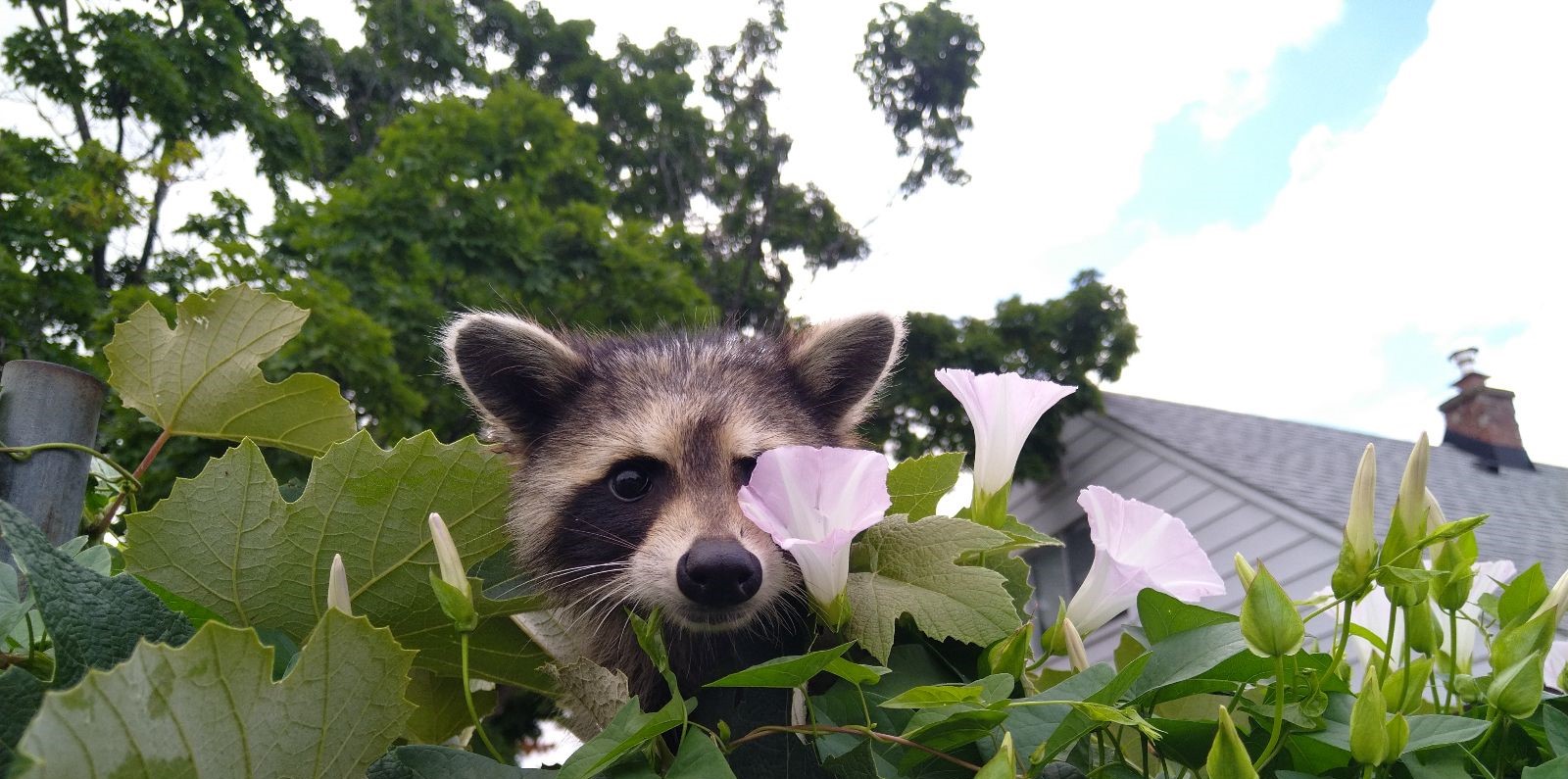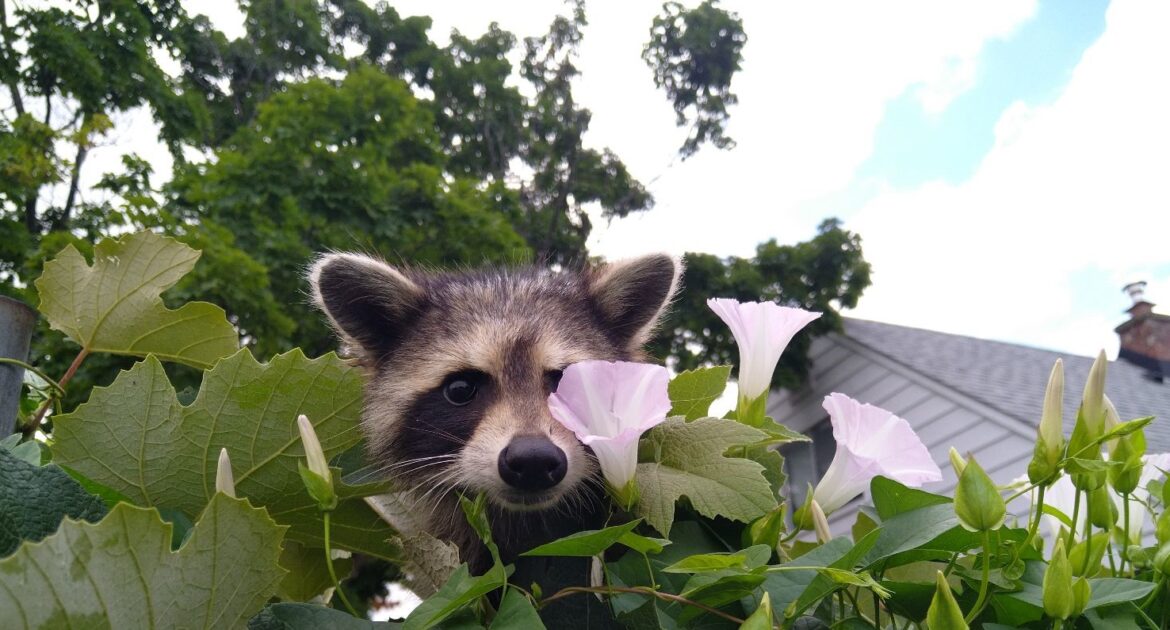When it comes to wildlife removal, understanding what you’re dealing with is key. Raccoons are fascinating creatures, often found in urban and suburban areas, and knowing a few raccoon facts can help you better understand these nocturnal visitors.
They belong to the Procyonidae family, making them relatives to animals like the ringtail and coati. These masked mammals are incredibly adaptable and intelligent, which can make getting rid of them a challenge. Their dexterous paws and curiosity often lead them into attics, basements, and even garbage bins.
It’s important to address raccoon issues humanely and effectively, ensuring both your safety and theirs. Skedaddle’s professional wildlife control services are equipped to handle these situations, ensuring raccoons are removed safely. By relying on our experts, you protect your home and contribute to the well-being of local wildlife populations.
This blog post will take you on a journey to explore the intriguing family tree of the raccoon, uncovering surprising connections and fascinating facts along the way. We’ll also provide essential tips for dealing with raccoons if they decide to make your home their own, and why Skedaddle is your go-to solution for wildlife removal.
Raccoons and Their Procyonidae Family Relatives
Raccoons are medium-sized mammals known for their dexterous front paws and distinctive black “mask” across their eyes. These adaptable creatures are found across North America and are renowned for their intelligence and resourcefulness. But what exactly are they related to?
Many homeowners are surprised to learn that raccoons have a varied set of relatives in the animal kingdom, some of which might not be immediately obvious.
Raccoons belong to the Procyonidae family, which includes other small to medium-sized mammals such as coatis, kinkajous, olingos, ringtails, and cacomistles. These animals share similar traits, such as a keen sense of touch and a penchant for climbing, making them adept at navigating their environments.
Coatis are native to South America and Central America. While they resemble raccoons, coatis have longer snouts and tails. Unlike the often solitary raccoon, coatis are social animals frequently seen in groups. They are known for their lively and curious nature, often exploring their surroundings in search of food.
Kinkajous, also known as “honey bears,” are nocturnal and arboreal, spending most of their lives in trees. They have prehensile tails that help them grip branches, a trait not shared by raccoons. Kinkajous are primarily frugivores, feeding on fruit, but they also consume nectar, giving them their sweet nickname.
Olingos, ringtails, and cacomistles are lesser-known relatives of raccoons. Olingos are tree-dwelling creatures found in Central and South America, closely resembling kinkajous but lacking prehensile tails. Ringtails, native to North America, are agile climbers with long, bushy tails ringed with black and white. Cacomistles, which look similar to ringtails, are native to Central America and parts of Mexico, known for their nimbleness and ability to adapt to various habitats.
The diverse relatives of raccoons highlight the evolutionary adaptability of the Procyonidae family. These animals have evolved various traits to thrive in different environments—from the dense forests of Central America to the urban landscapes of North America. Raccoons are part of a fascinating and diverse family of mammals. Understanding their relatives can deepen our appreciation for these intelligent creatures and their unique place in the animal kingdom.
The Relatives You Didn’t Expect
While raccoons have clear connections to animals within the Procyonidae family, their relationship with other species might surprise you. For example, raccoons are more distantly related to bears than you might think. Both raccoons and bears belong to the order Carnivora, which means they share a common ancestor if you go back far enough in evolutionary history.
Another interesting relative is the red panda, which was once thought to be closely related to giant pandas but is now classified in its own unique family, Ailuridae. The red panda shares some characteristics with raccoons, such as their diet and arboreal lifestyle. Both raccoons and red pandas have a false thumb, which is an extended wrist bone that helps them grasp objects.
The Procyonidae family itself is part of a larger group known as the Caniformia suborder, which also includes dogs, weasels, and seals. This means that, at a very distant level, raccoons share a connection with domestic pets like dogs and even aquatic mammals like seals!
Why Raccoons Love Your Home
Raccoons are incredibly adaptable, which is one reason they often find their way into human homes and properties. They are omnivorous, meaning they eat both plants and animals. This dietary flexibility allows them to thrive in various environments, from rural forests to urban cities. When natural food sources are scarce, raccoons will scavenge through garbage cans and compost bins, looking for an easy meal.
Their dexterous paws allow them to open latches, jars, and even doors. Combine this with their excellent climbing abilities, and it’s no wonder they can infiltrate homes by finding the smallest openings in roofs, attics, and basements. Once inside, they can cause significant damage by chewing on wires, tearing up insulation, and contaminating areas with their waste.
One of the most frustrating aspects of having raccoons in your home is their tendency to return. Raccoons are territorial animals and will often revisit a location where they’ve previously found food or shelter. This makes DIY removal particularly challenging and often ineffective.
Why DIY Isn’t the Solution
Many homeowners might be tempted to handle a raccoon situation on their own. However, DIY solutions can lead to more harm than good. Raccoons can carry diseases such as rabies and raccoon roundworm, which pose significant health risks to humans and pets. Attempting to trap or relocate raccoons can also result in injury to both the animal and the homeowner.
Furthermore, raccoons are protected by various wildlife laws, making it illegal to harm or relocate them in many places without proper permits. DIY methods like using traps or repellents often fail to address the root of the problem, which is usually an entry point that needs to be sealed or food sources that need to be removed.
Why Choose Skedaddle for Wildlife Removal in Durham
When it comes to handling raccoons, Skedaddle Humane Wildlife Control is your best choice. We specialize in humane, effective, and permanent solutions to wildlife problems. Our expert team is trained to handle raccoons safely and efficiently, ensuring that they are removed from your home without harm.
At Skedaddle, we don’t just remove the raccoons; we also identify and seal entry points to prevent future invasions. Our process involves a thorough inspection of your property to determine how the raccoons got in and what can be done to keep them out. We use durable materials and proven methods to seal these entry points, ensuring a long-term solution.
In addition to raccoon removal and exclusion, we also provide cleanup and decontamination services. Raccoons can leave behind a mess, including droppings and nesting materials, which can contaminate your living space. Our team will clean and sanitize the affected areas, restoring your home to a safe condition.
Handling wildlife requires specialized knowledge and equipment. Skedaddle’s team is equipped with the latest tools and techniques to ensure safe and humane removal. We understand raccoon behaviour, which allows us to implement effective strategies tailored to your specific situation.
Our approach is rooted in years of experience and a commitment to humane practices. Unlike other companies that rely on trapping and relocating, which often leads to the raccoons returning, Skedaddle focuses on exclusion and prevention. This ensures that once the raccoons are removed, they won’t be coming back.
We also prioritize the safety of both our clients and the animals. Our humane methods ensure that raccoons are handled with care and released back into the wild, where they can continue to play their essential role in the ecosystem.
The Skedaddle Guarantee
When you choose Skedaddle, you’re choosing peace of mind. Our services come with a comprehensive guarantee, providing you with assurance that your home will remain raccoon-free. We stand by the quality of our work and are committed to your satisfaction.
Our team is available to provide ongoing support and advice, ensuring that your home stays protected from wildlife intrusions. We believe in building lasting relationships with our clients, offering expert guidance and reliable solutions for all your wildlife concerns.
A Community of Satisfied Customers
Skedaddle has helped thousands of homeowners reclaim their homes from unwelcome wildlife guests. Our reputation is built on trust, reliability, and exceptional service. We take pride in the positive feedback we receive from our clients and are dedicated to maintaining the highest standards in the industry.
While we don’t provide ongoing support and monitoring, our thorough initial service and expert advice equip you with everything you need to keep raccoons and other wildlife at bay. Our goal is to empower you with the knowledge and tools to protect your home effectively.
A Humane Raccoon Removal Solution with Skedaddle
If you’re dealing with raccoons or any other wildlife in your home, don’t wait until the problem escalates. Contact Skedaddle Humane Wildlife Control today for a professional, humane, and effective solution. Our team of experts is ready to assist you and ensure your home remains safe and raccoon-free.
Take the first step towards reclaiming your home by scheduling a consultation with us. Experience the Skedaddle difference and enjoy peace of mind knowing that your wildlife issues are being handled by the best in the business.




